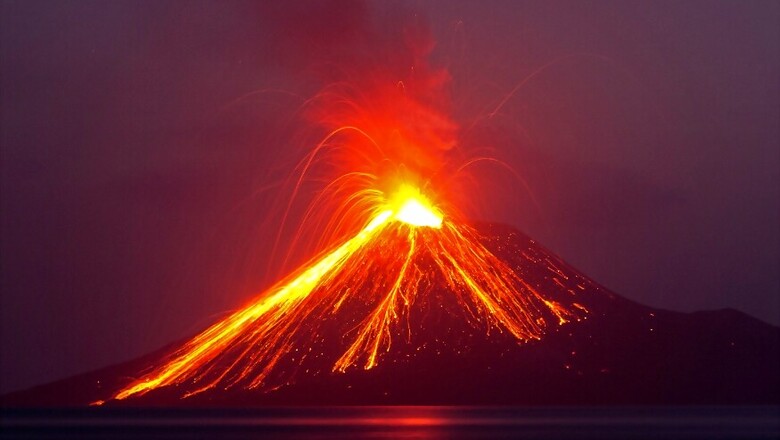
views
Washington: Massive volcanic eruptions in India's Deccan Traps had climatic and ecological impacts that were profound, long-lasting and global, according to a study.
Researchers from the University of Michigan (U-M) in the US noted that Deccan Traps are known to have contributed to the mass extinction that killed off most dinosaurs and about three-quarters of the planet's plant and animal species 66 million years ago.
Scientists have long debated the significance of the Deccan Traps eruptions, which began before the asteroid or comet impact and lasted, on and off, for nearly a million years, punctuated by the impact event.
Now, a geochemical analysis of fossil marine mollusk shells from around the globe, described in the journal Nature Communications, is providing new insights into both the climate response and environmental mercury contamination at the time of the Deccan Traps volcanism.
From the same shell specimens, the researchers found what appears to be a global signal of both abrupt ocean warming and distinctly elevated mercury concentrations.
Volcanoes are the largest natural source of mercury entering the atmosphere.
The dual chemical fingerprints begin before the impact event and align with the onset of the Deccan Traps eruptions.
When the researchers compared the mercury levels from the ancient shells to concentrations in freshwater clam shells collected at a present-day site of industrial mercury pollution in Shenandoah Valley in Virginia, US, the levels were roughly equivalent.
Evidence from the study supports the idea that Deccan Traps volcanism had climatic and ecological impacts that were profound, long-lasting and global, the researchers found.
"For the first time, we can provide insights into the distinct climatic and environmental impacts of Deccan Traps volcanism by analysing a single material," said Kyle Meyer, lead author of the new study.
"It was incredibly surprising to see that the exact same samples where marine temperatures showed an abrupt warming signal also exhibited the highest mercury concentrations, and that these concentrations were of similar magnitude to a site of significant modern industrial mercury contamination," said Meyer, now a postdoctoral researcher at Portland State University in the US.
Mercury is a toxic trace metal that poses a health threat to humans, fish and wildlife.
Human-generated sources of mercury include coal-fired power plants and artisanal gold mines.
"The modern site has a fishing ban for humans because of high mercury levels. So, imagine the environmental impact of having this level of mercury contamination globally for tens to hundreds of thousands of years," said U-M geochemist and study co-author Sierra Petersen, who was Meyer's co-adviser.
The researchers hypothesised that the fossilised shells of mollusks, principally bivalves such as oysters and clams, could simultaneously record both coastal marine temperature responses and varying mercury signals associated with the release of massive amounts of heat-trapping carbon dioxide and mercury from the Deccan Traps.
The long-lived Deccan Traps eruptions formed much of western India and were centered on the time of the Cretaceous-Paleogene (K-Pg) mass extinction, 66 million years ago.
The study used fossil shells collected in Antarctica, the US, Argentina, India, Egypt, Libya and Sweden.
The researchers analysed the isotopic composition of the shell carbonate to determine marine temperatures, using a recently developed technique called carbonate clumped isotope paleothermometry.
They also measured the amount of mercury in the remarkably well-preserved fossil shells and assembled the first-ever deep-time record of mercury preserved in fossilised biomineral remains.

















Comments
0 comment